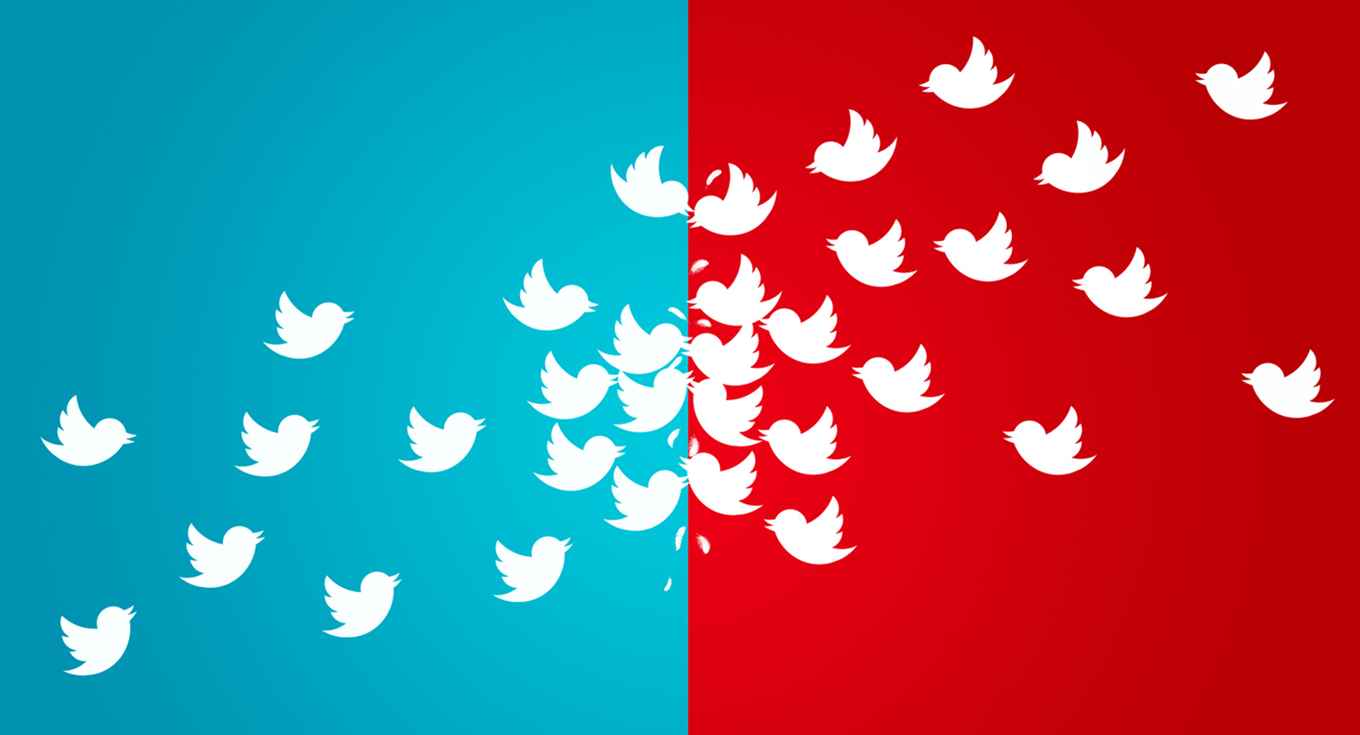Social media polarize politics for a different reason than you might think
11 October 2022

Political polarization, or the division between political groups, has become more extreme and grown one of the most serious threats facing democracies today, states Törnberg. He calls it both a direct threat, with a majority of Americans now anticipating a civil war, and an indirect threat, ‘a “meta-crisis” that leads to all other crises because it reduces our capacity to respond to pressing societal challenges, such as climate change, pandemics, or rising inequality.’
There is broad and general agreement that the rise of digital media, like Facebook and Twitter, has intensified polarization and made politics more conflictual. But there is less agreement around the causal mechanism. Why do digital media lead to political polarization? With his study Törnberg responds to this growing call for new explanations for how and why digital media cause polarization.
Echo chambers?
For years, the dominant explanation has been the existence of so-called ‘echo chambers’ or ‘filter bubbles’. ‘According to this famous idea, digital media allow us to self-isolate in clusters with only likeminded others and avoid the discomfort of meeting other views’, explains Törnberg. ‘Since it is thought that we need this interaction with other views to moderate our political positions, echo chambers are said to lead to radical and extreme political positions – and thereby polarization.’
Studies suggest that social media is characterized by more interaction outside our local network
In recent years researchers have however begun to question this explanation. ‘The main problem is that we just aren’t finding any echo chambers’, says Törnberg. ‘In fact, studies suggest that social media is characterized by more interaction outside our local network, and more interaction with political opponents than in our offline life.’
A growing sense of difference and dislike
According to Törnberg, we must first rethink the nature of political polarization if we are to understand the role of digital media. ‘There has been a tendency to think of polarization as opinions becoming more and more different. But political scientists are increasingly finding that polarization today is characterized not by political disagreement, but by a growing emotional sense of difference and dislike. We are coming to understand polarization as rooted in identity and emotions, rather than opinions and rational arguments.’
Törnberg links this sense of dislike and difference to a process called ‘sorting’. ‘We shouldn’t think of stable and cohesive societies as not having conflicts or disagreements – any healthy society will have many. It is rather that their conflicts and disagreement are balancing against each other. We may vote differently, but if we support the same football team or go to the same church, there is space for interpersonal respect. The problem begins when the many disagreements in society start to align – when what football team we support tells you whom we vote for. Such alignment is at the heart of dangerous polarization.’
Social media can be linked to partisan sorting
Törnberg links social media to the partisan sorting that underlies polarization. He uses an agent-based computational model to make visible how changes in the structure of interaction affects the social identities of individuals. ‘Such models combine empirical data that are already available and examine how these are linked to capture a causal mechanism’, explains Törnberg. ‘The model shows that when individuals interact locally, the result is local political identities. For instance, a Mississippi Republican may have more in common with a Mississippi Democrat than with a Texas Republican. Such regional differences create a counterbalance against partisan conflicts, essentially creating a stable patchwork of cross-cutting conflict, and the result is low levels of polarization.’
But when digital media result in more non-local interactions, the parties become more and more homogeneous. ‘Social media means that we come into contact with random people from basically anywhere. The result is that political cultures become pressured to align: Mississippi Republicans start thinking of themselves as Republicans, instead of Mississippi Republicans. It becomes like a maelstrom in which more and more identities, beliefs and cultural preferences are drawn into an all-encompassing societal division that runs along partisan lines’, explains Törnberg.
Social media as the Lord of the Flies
While the paper contributes theoretical insights to the study of polarization dynamics, Törnberg sees his paper’s most important contribution as a new metaphor for polarization on digital media: ‘We shouldn’t think of the internet as an “echo chamber” in which our arguments are repeated back to us until we get more and more convinced. I think it’s more like the island in the Lord of the Flies: it creates a social space that affords the emergence of separate social groups, it strengthens collective identities, and pushes opposing groups into conflict. This leads to a form of politics that is based on cycles of conflict between two warring tribes.’
Publication details
The paper is published in the influential journal PNAS (Proceedings of the National Academy of Sciences): Törnberg, P. 2022. How digital media drive affective polarization through partisan sorting. PNAS.
Törnberg is currently working on a full-length book for de Gruyter developing his perspective on the relationship between digital media and political polarization.